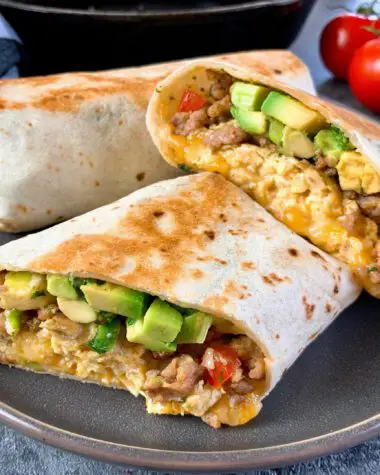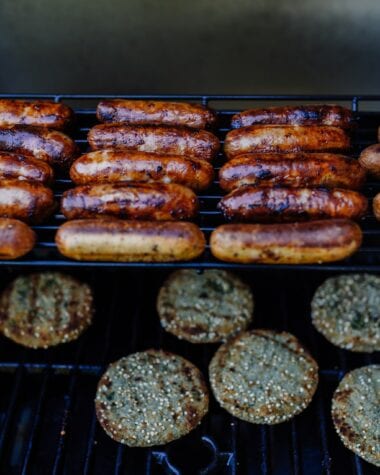Were you not able to cook all the frozen food you thawed? Now you may be thinking: is it safe to refreeze these portions and put them back in my freezer? Can you make a meal, eat it, freeze the leftovers, thaw them after a day or two, and then refreeze for a second round of leftovers? Can you refreeze frozen foods after thawing at all?
Well, we’ve been there and wondered about the same queries for a long while. In this article, we will dive deep into the questions we proposed above and answer all of them conclusively. Here is everything you need to know about the very concept of refreezing frozen foods after thawing or cooking.
Refreezing Thawed Food
Let’s go straight to the nitty gritty – you can refreeze and re-thaw food and eat them. However, just because you can technically do it safely means you should. Generally, food experts recommend that you only thaw food once. That’s it.
So why isn’t it advisable to refreeze already thawed food? The biggest downside of the process of freezing and thawing and refreezing and re-thawing is that the food’s quality will significantly deteriorate. The food becomes excessively mushy, and the whole process may drain all of its enticing natural flavors and texture.
It is worth noting that most food contains water. When you freeze food, the water inside them expands, and the cell walls break down, leading to that recognizable mushy texture commonly observed on refrozen foods.
The only exception to this is flash-frozen products. If you purchase something frozen, it likely has already gone through a deep, flash-freezing process, so the water inside them hasn’t had time to pool and drastically degrade its quality.
On the contrary, if you buy something fresh and freeze them yourself in your home freezer, chances are it would freeze much slower. This gives the water all the time in the world to turn your food into a sad mush. For this reason, soup is something you can get away with refreezing. Meat, however, is a different matter of discussion entirely.
Vegetables, on the other hand, are almost always safe to refreeze. However, remember that, like meat, they lose much of their quality, texture, flavor, and appearance when doing so, regardless if ice crystals are present in the package itself or not.
If, for some reason, you don’t want to eat already thawed food right away; you may consider cooking them and adding them to soup or stew and freezing the soup itself for later consumption.
How to Safely Refreeze Already Thawed Food
To safely refreeze already thawed food, the thawed product must have been kept cold at 40 degrees or below for no more than 3 to 4 days. Put the food in the coldest part of the freezer, mark it with the date you put it there, and remember to use it within 2 to 3 months, max.
If the entire freezer has partially thawed, it may be necessary to ask friends or find another freezer to refreeze some food packages for you. Take note that a conventional freezer can only refreeze a small amount of food at a time. Refreezing smaller amounts of food ensures that the food is refrozen safely and with the smallest amount of added ice crystals forming.
If food is completely thawed, warmed to room temperature, or left out of the refrigerator for more than 2 hours, never mind putting them back in the freezer. For safety’s sake, best to throw them out. This rule should apply to meat, poultry, and already-cooked foods.
When deciding about refreezing foods, always consider safety first before everything else. After that, consider the inevitable loss of quality. With some foods, the loss of quality they take from refreezing is so pronounced that they may not be worth the trouble of refreezing at all.
Related Article: How Long Can You Keep Frozen Food In The Freezer?
Why You Shouldn’t Refreeze Thawed Meat
Did you know that some bacteria don’t have to infect you to harm you? Some bacteria can put things into food called ‘toxins,’ and these toxins, unlike bacteria, aren’t broken down or suspended by heat.
Bacteria multiplying in the food risks the accumulation of toxins, which will then make you sick when unknowingly consumed, even though the process of reheating has destroyed the bacteria that made the toxins in the first place.
With that in mind, if you repeatedly cool and re-warm food, the food might spend sufficient time at a precise temperature that could encourage the present bacteria to grow and multiply further, thus, releasing more toxins into the food. In this instance, the bacteria itself isn’t the enemy anymore. It is the toxins that they may have released that pose a threat.
Another reason is that if you keep on warming and cooling down food, some bacteria will just end up flourishing, and they will go from being at very low levels in the food, where they aren’t growing very fast because the temperature is low, to reaching a concerning number in the food that might be an infectious dose.
Take, for example, catching Salmonella. You need to eat about a million organisms of it to officially be diagnosed with Salmonella. Other bacteria infect you at much lower doses, however. So, at the end of the day, it really depends on what the pathogen is and the mechanism through which it makes you sick.
Keep this in mind at all times: if food spends more time at higher temperatures, the higher the chance that bacteria will grow and, therefore, make you sick once you consume it. Furthermore, it isn’t just bacteria that pose a threat to you. Although they can be suspended in low temperatures, bacteria can release toxins that do not necessarily go away with heat.
With all that in mind, the best advice is to cook and consume all the meat that you may have thawed. And if refreezing it proves inevitable, only do it once, and that’s it. The more you reheat meat, the riskier it gets, which is why refreezing thawed meat is never advisable.
Foods You Should Never Refreeze
Generally speaking, you should always cook or utilize all the food you thawed and, if needed, refreeze the ‘cooked’ product. That said, we understand that there may be specific instances where you don’t have time to cook it, so if you are in a hurry and wondering whether throwing it back in the freezer is a good idea, keep in mind the five foods we would share below.
These are the foods that you should always think twice before refreezing. If possible, never do.
Raw Proteins
This includes meat, poultry, and seafood. Foods that fall into this type should only be refrozen if they are thawed inside your refrigerator or in a chilled environment less than 42 degrees Fahrenheit. So, if such are thawed on the counter or already have an off color or smell, best to just throw them in the bin.
Moreover, remember that a lot of seafood, particularly shrimp, arrive at grocery stores already frozen but are defrosted to be put into the display case. This means that they have already gone through a first freeze.
With that in mind, it is recommended that you cook them first, as putting them in your home freezer means putting them up for a second freeze, which is precisely what we are avoiding.
We advise re-reading the previous section for a better explanation as to why refreezing meat is a bad idea.
Juice Concentrates
Fermentation occurs faster than you think in fruit-based products, so it’s generally a great idea to enjoy them quickly and definitely don’t try to refreeze them. Take note that this goes for blended smoothies as well. Make it a point to consume juice concentrate products as soon as possible.
Ice Cream
Much like the previous entry, ice cream products are best consumed immediately. If you left it out on the counter, so it was easier to scoop, and then forgot to put it back in the freezer immediately after, and thus, have melted, never mind putting it back in the freezer anymore.
To avoid wasting the food, drink it as a milkshake or use it for a batch of french toast. Refrozen ice cream will have a weird, icy texture you’d hate to eat. Worse, it may go back into the freezer with mold at the bottom.
Combination Meals/ Ready-to-Eat Meals
They are already cooked and ready to go, so why wait to consume them? Eat up your pot pies, pasta, stews, and casseroles, or bring them for lunch, so they don’t go to waste.
As with frozen, ready-to-eat meals, what’s the point of refreezing them? Doing so only puts them for a second freezing, and that just exposes them to more harmful bacteria or toxins that may pose a threat to your general health.
Conclusion
The bottom line is, refreezing already thawed food is technically safe to do as long as you do it only once or twice, depending on the food. However, doing so is never recommended as the process of thawing, and then refreezing exposes the food to more things that may potentially be harmful to you.
With that said, make it a general rule to eat or use all the food products you may have properly thawed.









